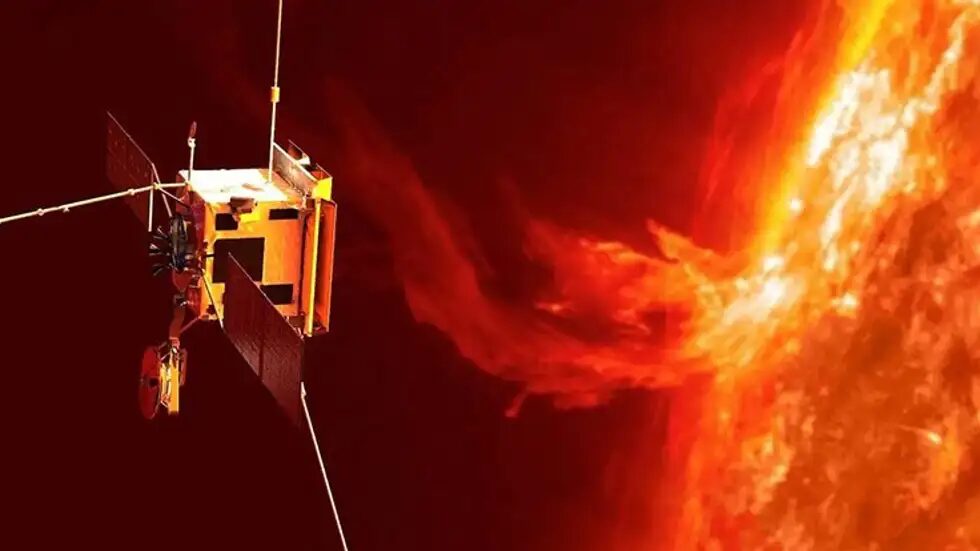If these eruptions on the Sun's surface are big enough, they can cause billions of tons of plasma and electrically charged particles to dash towards Earth. These eruptions, also known as coronal mass ejections (CME), were observed by the Solar Orbiter on February 12, NASA said in a statement.
The orbiter reached closer to the Sun this year, on February 10, when it flew within 48 million miles (77 million kilometers) of the star — just half the distance between the Sun and Earth. As it hurled past the Sun and back to the cooler zones of space, the orbiter caught video footage of two CMEs.
The CME was captured by NASA's instrument, the Solar Orbiter Heliospheric Imager (SoloHI), that is onboard the spacecraft. SoloHI observes the solar wind, dust, and cosmic rays that fill the space between the Sun and the planets. It used one of its four detectors at less than 15 per cent of its normal cadence to reduce the amount of data acquired.
While the view captured by the instrument is brief and grainy, it shows a sudden blast of particles, that is the CME, escaping from the Sun. In the video, the dense leading edge of the CME is visible about halfway through the video as a bright burst which eventually drifts off-screen to the left.
The first coronal mass ejection, or CME, observed by the Solar Orbiter Heliospheric Imager (SoloHI) appears as a sudden gust of white (the dense front from the CME) that expands into the solar wind. This video uses difference images, created by subtracting the pixels of the previous image from the current image to highlight changes. The missing spot in the image on the far right is an overexposed area where light from the spacecraft solar array is reflected into SoloHI's view. The little black and white boxes that blip into view are telemetry blocks - an artifact from compressing the image and sending it back down to Earth.(ESA & NASA/Solar Orbiter/SoloHI team/NRL)
This discovery came as a surprise to the team, as when the mission was being planned, the team wasn't expecting to record any data during this time.
Further, two more imagers of the Solar Orbiter, ESA's Extreme Ultraviolet Imager and Metis, also captured images of the CME. NASA's Solar Terrestrial Relations Observatory, STEREO-A spacecraft, also caught a glimpse of the phenomenon from its COR2 detector, which blocks out the Sun's bright disk to see the otherwise faint phenomena in the solar wind.
The first CME witnessed by Solar Orbiter's Solar Orbiter Heliospheric Imager, as seen from NASA's Solar Terrestrial Relations Observatory-A spacecraft.(NASA/STEREO/COR2)
While space agencies have been watching and observing the CMEs for decades, the new Solar Orbiter has been an absolute game-changer due to the kind of observations it is capable of.
"We have realised in the last 25 years that there's a lot that happens to a CME between the surface of the Sun and Earth," said Robin Colaninno, principal investigator for SoloHI at the US Naval Research Laboratory in Washington DC. "So we are hoping to get much better resolution images of all of these outflows by being closer to the Sun."
However, the work of the Solar Orbiter has not finished yet, as the Sun is entering a new 11-year solar cycle. This will lead to more frequent and violent solar flares in the next few years.
Comment: With a "Grand Solar Minimum" upon us, the Sun is expected to be much quieter than usual, however, in turn Earth's magnetic field is weakening significantly, so the impact on our planet may be felt much more severely: A warning from history: The Carrington event was not unique
Over the next six years, the Solar Orbiter is expected to fly closer to the Sun's poles than any other probe has done in the past. Its official mission begins in November when SoloHI and the rest of the remote-sensing instruments will be switched on in full mode.




Comment: See also: